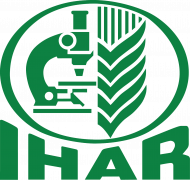Abstract
Rimsulfuron is commonly used to control common lambsquarters (Chenopodium album L.) and redroot pigweed (Amaranthus retroflexus L.) in potato (Solanum tuberosum L.) fields. Comparing rimsulfuron absorption and metabolism patterns in these two weed species with potato could provide crucial information to optimise herbicide application in the field. Hence, an experiment was conducted in Denmark and Iran to evaluate the absorption and metabolism of rimsulfuron at the application rate of 30 g ha−1 in potato, common lambsquarters and redroot pigweed. Seedlings at the 2- to 4-leaf stage were foliar treated with rimsulfluron and plant tissues were harvested at 0, 1, 4, 8, 24 and 48 h after treatment (HAT) to measure the rate of herbicide absorption and metabolism using HPLC. Absorption and metabolism of rimsulfuron differed between potato and weed seedlings. This explains the different susceptibility to rimsulfuron in potato, redroot pigweed and common lambsquarters. Redroot pigweed, the most sensitive species in this study, showed the highest rate of absorption and lowest rate of the herbicide metabolism. Common lambsquarters, a species with an intermediate sensitivity, revealed moderate rimsulfuron absorption and metabolism levels. Potato, the tolerant crop species to rimsulfuron, showed the lowest and highest rate, respectively, of absorption and metabolism.















